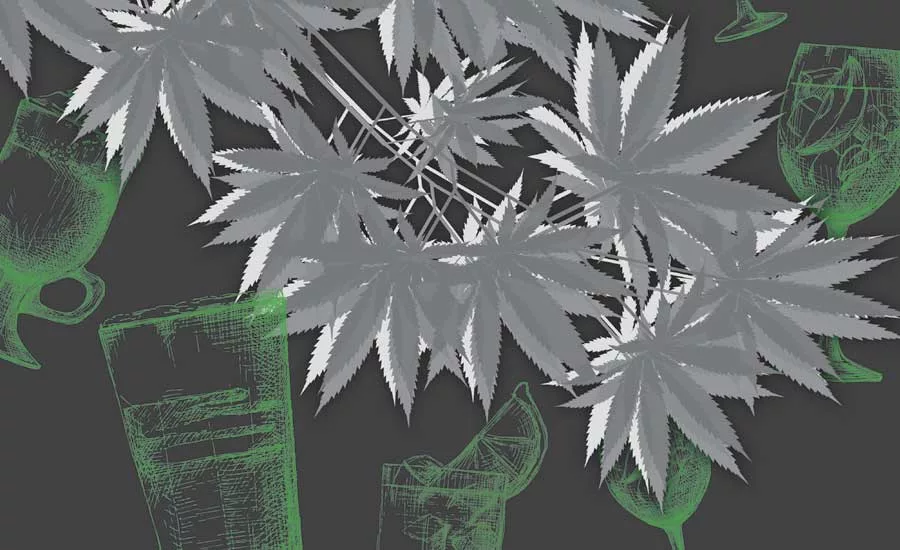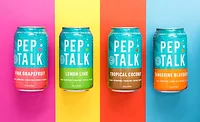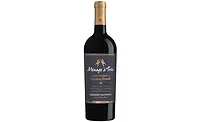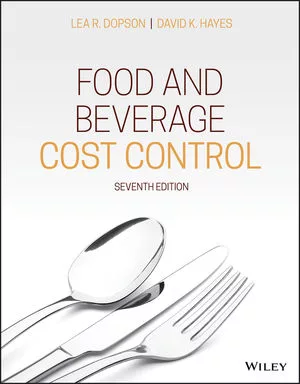Cannabis-infusions open new opportunities for beverage-makers
Consumers indicate tea as most likely beverage they would consume with cannabis

In terms of modern society, historians commonly will point to three industrial revolutions that have greatly advanced society: the steam engine, the age of science and mass production, and the integration of digital technology. Each were revolutionary for the time periods in which they emerged and continue to impact many aspects of current society. For the consumer packaged goods (CPG) market, the emergence of a certain category also might cause a revolution in terms of CPG development — cannabis.
Whether it is tobacco, packaged foods, consumer health, beverages, or beauty and personal care, many market analysts recognize that cannabis is poised to disrupt these consumer markets as the flowering plant makes inroads in legalization and mainstream acceptance.
In its 2018 report titled “Here Comes Cannabis: How Legalisation Will Disrupt Global Industries,” Chicago-based Euromonitor International estimates that the legal and illegal global market for cannabis equates to $150 billion, with the legal market expected to grow 77 percent of total sales at $166 billion by 2025.
“Within the next decade, some form of cannabis will be a part of consumers’ daily routines, either as a functional ingredient in foods, beverages and beauty or as a wellness mood enhancer in health,” the report states.
Cannabis 101
Although cannabis continues to grab headlines across consumer and business trade media outlets, the scientific components and definitions go deeper than what is able to fit in a two-minute story package.
“The cannabis plant has three main species: sativa (hemp and marijuana), indica (marijuana) and ruderalis,” Euromonitor’s report states. “Ruderalis is rarely used for consumption. All cannabis plants contain cannabinoids, which interact with the human body’s endocannabinoid system.
“Over 100 different cannabinoids exist, of which cannabidiol (CBD) and tetrahydrocannabinol (THC), a psychoactive substance, are the most well-known,” it continues.
Danny Brager, senior vice president at Nielsen for U.S. Beverage Alcohol Practice, further elaborates on the cannabis compounds and its various effects.
“CBD is found in both the aerial parts (those above the ground) of both marijuana and hemp,” he says. “It is a compound called a cannabinoid that is associated with easing pain and providing relaxation. THC is also a cannabinoid, but unlike CBD, it is only found at levels greater than 0.3 percent in marijuana.
“THC is the cannabinoid primarily responsible for the psychoactive effects of marijuana often referred to as a ‘high’ or a ‘buzz,’” Brager continues. “THC and its associated intoxicating effect is the main reason the federal government still considers any product derived from marijuana as a controlled substance and it remains federally illegal.”
The legal status of cannabis in the United States remains complicated as a number of states have legalized the drug for medical use while a choice number has done so for recreational use, despite its illegal designation at the federal level.
“Cannabis regulation is currently divided into medical and recreational or ‘adult’ use,” Euromonitor’s report states. “Medical use is only legal with a prescription or by registering as a medical patient. Recreational use allows cannabis products containing THC to be sold freely through licensed outlets at a taxable price. The government either controls the production and sale of the product, or it delegates this to the industry under strict legal guidelines.”
For recreational marijuana sales, Euromonitor details that 10 U.S. states have authorized it while 33 states allow for medical marijuana usage. “Euromonitor International expects federal legalization of recreational cannabis in the U.S. within the next 10 years,” the report states. “In the rest of the world, medicinal marijuana is a stronger prospect with some large markets, such as Germany, Czech Republic and Australia, moving forward with liberalized structures.”
One of the most significant legal impacts for the cannabis market was the de-scheduling of hemp-derived CBD as part of the 2018 Farm Bill.
“Through the de-scheduling of hemp-derived CBD, it is no longer federally illegal for manufacturers and retailers to sell non-ingestible forms of hemp-derived CBD,” says Rick Maturo, associate client director for Nielsen Beverage Alcohol and Cannabis Practice. “These formats include topicals, sprays, rubs, and hand and body care products. Because the FDA has not approved hemp-derived CBD as an ingredient in ingestibles (capsules, drops, edibles, drinks, etc.) these formats are not on the shelves of major chain CPG retailers, nor are they included in the product portfolio of larger manufacturers. That said, although ingestible hemp-derived CBD products are not approved, there are cases today where some of these products may be found in smaller niche retailers (e.g., health food stores, vape shops) and eCommerce channels, including some that are direct-to-consumer.”
What the 2018 Farm Bill ultimately did was escalate the battle that existed with CPGs, the pharmaceutical industry and marijuana businesses in serving the needs of American’s pain management and holistic treatment solutions, Maturo adds.
Despite the de-scheduling of hemp-derived CBD for non-ingestible products, the cannabis market remains complex.
“Regulations vary significantly not only by individual state but also across municipalities within legal recreational states to include things like traceability, adult-only purchasing and use, dispensary locations, advertising, brand imagery and many others,” Maturo says. “Also, because marijuana is federally illegal, all facets of the marijuana ecosystem must be contained within each legal state. There is no legal interstate commerce for marijuana.”
Because cannabis remains illegal at the federal level and the 2018 Farm Bill only cleared hemp-derived CBD for non-ingestibles, many legal hurdles still need to be overcome for the growing market, experts note.
“THC and CBD from the marijuana plant continues to be federally illegal and highly regulated at the state level within those states that legally permit adult purchasing and consumption,” Maturo says. “Only licensed dispensaries can sell marijuana, and those facilities cannot sell any non-marijuana related products, including CPG-type products. The de-scheduling of hemp-derived CBD (for non-ingestible products) has provided opportunity — or risk — for CPG manufacturers and retailers that make or sell products that overlap with the need states that the hemp-derived CBD products also address.”
Drinkable future
Although the legal standing for consumable forms of cannabis still has more questions than answers, CPG manufacturers see vast potential for this emerging market, including beverage formulators.
“Headset’s Insights Data Platform today covers the legal cannabis markets of California, Nevada, Washington and Colorado,” Nielsen’s Brager says. “Within that dataset, recreational cannabis sales topped $4 billion last year (vs. $2.5 billion in prior year), and amounted to $1.2 billion in Q1 2019.”
Manny Perez, vice president of marketing for Headset, reports that sales for infused beverages in those markets in 2018 totaled $41 million with a 2 percent basket penetration. Additionally, 80 percent of the sales were among the Top 5 brands in each state, averaging $15 an item.
Early 2019 sales also are showing potential. “Q1 2019 sales were $12.3 million across our measured markets — California, Washington, Nevada and Colorado — this amounts to approximately 1 percent of total recreational cannabis sales,” Perez says.
Based on Headset data, the overall legal cannabis market is forecasted to be between $4.8 and $6 billion in 2019 with beverages predicted to account for 1 percent of the market, which would put beverages sales range between $48 and $60 million, Perez says.
However, Perez adds that those predictions are a reflection of uncertainty because of Senate Bill 67 in California. The now amended measure would invalidate the expiration date of temporary licenses issued by the California Department of Food and Agriculture (CDFA) as long as licensees annually submit applications and fees prior to expiration and under the condition that the licensees remain in the location and business venture, according to an opinion article from the Desert Sun newspaper. Additionally, the CDFA would have more time under the measure to transition growers from temporary to provisional or full annual licenses, it adds.
“In 2019, the thing that everyone is keeping an eye on is SB67 in California,” he says. “If not resolved, we could see a contraction in the market, versus. If resolved, growth would hopefully continue as it has. This makes it difficult to forecast California.”
Although beverages account for a small percentage of sales within the legal cannabis market, they still offer much potential, says Beth Bloom, associate director of U.S. Food and Drink Reports for Chicago-based Mintel.
“When we asked consumers in legal states which edible marijuana/cannabis formats they’d be interested in consuming, 34 percent said tea,” she explains. “This is the fourth leading format of interest behind baked goods, chocolate candy, and non-chocolate candy. Beyond tea, 32 percent are interested in juice, 29 percent are interested in carbonated soft drinks, 27 percent are interested in coffee, and 21 percent are interested in sparkling water.”
Nielsen’s Brager also notes consumers’ interest in cannabis-infused beverages. “Cannabis interacts and overlaps with a broad set of more traditional consumer packaged goods categories, including beverages, both alcoholic and non-alcoholic,” he says. “For example, our consumer research suggests that cannabis-interested consumers are more likely to drink beer (53 percent) and spirits (50 percent) than wine (37 percent). Only 35 percent of current wine drinkers are interested in legally consuming cannabis for recreational purposes, versus 41 percent for beer drinkers and 44 percent for spirits drinkers.”
In its report, Euromonitor details that the beverage alcohol market has some of the stronger ties to cannabis exploration as major manufacturers already are investing in the space.
“At least three leading corporate players have a stake in cannabis producers,” the report states. “Alcoholic drinks that contain any form of THC currently tend not to contain alcohol, as the effects of THC in alcohol are still being researched. The industry is already headed in a low- / non-alcohol direction and so a future where THC replaces ABV in alcoholic beverages with an intoxicating buzz is on the horizon.”
As a result, Mintel’s Bloom cautions that the beverage alcohol market could be challenged as manufacturers experiment with cannabis infusions.
“While the impact of cannabis legalization in parts of the country remains to be seen, 34 percent of cannabis users say they’ve reduced alcohol consumption since legalization, pointing to a likely challenge to be addressed,” she says. “Relaxation is the leading reason for consumption of both cannabis and alcohol, pitting the two markets as competitors. Dollar sales of alcohol at home were flat in 2018, growing only 0.3 percent in 2018 (-2.1 percent when adjusted for inflation).
“This is down from a 3.8 percent recent annual gain high point in 2015,” Bloom continues. “While a significantly smaller number of consumers use cannabis than drink alcohol, staving off sales losses will require alcohol players to be mindful of the competitive threat. Cannabis is more likely peeling away some consumption occasions from alcohol rather than converting consumers wholesale.”
Nielsen’s Brager also notes that cannabis-infused beverages could serve as an alternative to beverage alcohol, but adds that the social element of cannabis consumption extends beyond beverages.
“CBD- and THC-infused beverages provide consumers with another choice in satisfying certain needs that parallel similar needs also met by alcoholic beverages, particularly those associated with social enablement and experience enhancement,” he says. “Some consumers may choose to substitute an alcohol occasion for a cannabis occasion, and choices of the latter include, but go beyond just beverage cannabis product formats to also include other formats like vapes, concentrates, flower, pre-rolls, tinctures and edibles.
“On the other hand, cannabis can facilitate social interactions that bring people together and because of this could generate some additional beverage alcohol occasions, as cannabis is not for all,” Brager adds.
Yet, cannabis infusions are not limited to the beverage alcohol space as analysts point to the numerous non-alcohol beverage categories in which cannabis compounds can open up opportunities.
“Beverages including infused-waters, coffee, teas, carbonated beverages and energy drinks are viable foundational beverages for infusing CBD and THC, so there is an opportunity for manufacturers to introduce a cannabis-infused beverage, where or when it’s legal to do so,” Brager says. “But this also poses risks and opportunity for today’s non-alcoholic beverage industry.”
Mintel’s Bloom, however, notes that CBD isn’t experiencing strong demand when it comes to non-alcohol beverages.
“Only 8 percent of non-alcoholic beverage drinkers would be persuaded to choose a drink due to the inclusion of CBD,” she says. “However, the importance of functionality in the non-alcoholic beverage market suggests that interest may grow, especially considering that 38 percent of consumers would be persuaded to choose a drink with calming/relaxing properties — this is second only to an interest in hydration.”
This could stem from consumers being more aware of the THC compounds within cannabis versus CBD.
“Our research shows more education is in order, especially when it comes to CBD-only products,” Bloom says. “Sixty percent of cannabis users say THC amount is important in their cannabis choice, second only to price. This suggests that consumers are aware of the role THC plays in the product. A much smaller 32 percent say CBD amount is important in their choice. Stronger education efforts around CBD are in order.”
Motivating experimentation
As beverage manufacturers look to create cannabis-infused beverages, analysts highlight the importance of recognizing the product attributes that spark consumers’ exploration.
“Leading reasons for use of marijuana/cannabis include relaxation, stress relief and mood improvement,” Bloom says. “Leading reasons for using CBD-only products include pain relief, improved sleep and relaxation, suggesting that while both marijuana/cannabis and CBD-only products have strong therapeutic associations, CBD has a stronger association with medicinal outcomes.”
Yet, the curiosity aspect associated with cannabis and consumer usage actually is lower on the list of reasons for trying, Bloom adds.
“The leading reasons for cannabis consumption (and for interested non-users) are restorative in nature,” she says. “Fun, curiosity and experience enhancement fall further down the list, suggesting the promotion of fundamental and functional benefits may have a stronger draw than recreation. While this may be impacted by consumer willingness (or unwillingess) to admit they turn to a product purely for a good time, it suggests that leading with recreational messaging alone may not be the best approach.”
For marijuana and hemp-derived CBD beverages, Nielsen’s Brager explains that product attributes can vary based upon the ratio of CBD or THC in the product. The following are listed attributes that he has seen from beverage manufacturers:
- Low or no calorie
- Headache or hangover free
- Less filling
- No harm to organs (liver)
- Pain management or holistic health (CBD and THC)
- Experience enhancement or social enablement (THC)
Even though consumer interest in cannabis-infused beverages is increasing, experts note some formulation challenges need to be addressed.
“Most beverages are very bitter,” says Brian Sudano, managing partner for New York-based Beverage Marketing Corporation. “However, a breakthrough disruptive technology from Infusion Biosciences (APP Technology) addresses both the onset and offset as well as flavor profile which will open up cannabis beverages to a broad audience that would likely reject pervasively available offerings at this time.”
Nielsen’s Maturo also recognizes the taste implications when formulating cannabis-infused beverages, but highlights that it depends on the beverage category and the target demographic when deciding how to tackle this challenge.
“This depends upon whether the beverage is an alcoholic beverage (especially for beer, the cannabis terpenes are in alignment with the hoppy taste profile of beer) or a non-alcoholic beverage,” he says. “It is likely that high sugar concentrations in non-alcoholic beverages to mask the cannabis flavor profile will continue to dominate juices, carbonated beverages and fruit drinks. Consumers of functional beverages may be a bit more forgiving in cannabis taste profile of the beverage if the messaging around the functional purpose resonates with them.”
As beverage-makers address the various challenges of the emerging cannabis market, analysts note that many already have exhibited their investments in cannabis infusions.
“Brands (big and small) appear to be dipping their toes into (or tip-toeing around) the category,” Mintel’s Bloom says. “Beer maker Lagunitas launched a cannabis-infused sparkling water, Hi-Fi Hops, in California dispensaries in mid-2018. Alcohol conglomerates, including Constellation and Molson Coors, have teamed up with cannabis companies to explore market options. The introduction of cannabis-related elements, such as flavor profiles and non-psychoactive ingredients, can help brands (and consumers) get close to the on-trend action, without taking a leap into the deep end.
“In 2017, Lagunitas released its limited-edition SuperCritical Ale, in California,” she continues. “A hoppy beer brewed with terpenes, SuperCritical contained no THC. Similarly, New Belgium Brewing released The Hemperor HPA, a year-round beer that blends hemp with hops. The beer contains no THC or CBD, but features a flavor profile that emphasizes the hemp.”
Going forward, analysts expect that the beverage market will be a popular partner for cannabis ingredients.
“This segment will likely continue to grow, as beverages in general are a product format familiar to every consumer, and beverage companies have proven their aptitude for innovation and adaptability over the years,” Nielsen’s Maturo says. BI
Looking for a reprint of this article?
From high-res PDFs to custom plaques, order your copy today!








